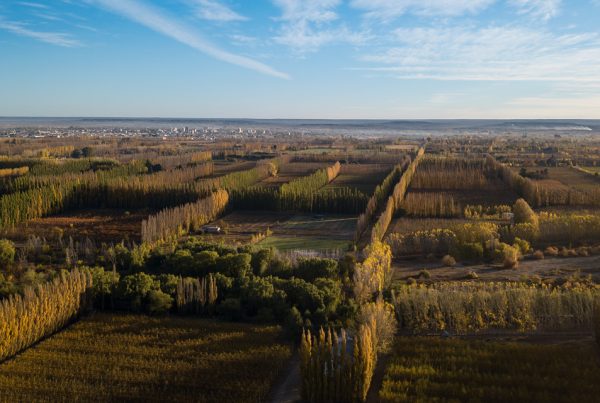Newsletter 147 – 02.14.2023
In the last three years, unexpected events have substantially changed the world. Fruits were not absent from these changes, apples being a clear example. The pandemic, the war, the economic crisis and climate changes affected production and trade and modified purchasing and consumption habits. The southern season will have to face many challenges.
Lower harvest in the Southern Hemisphere
In general, production is expected to be lower than the average of the last 3 years. This is due to a slight decrease in the harvest in Chile, South Africa and New Zealand. In the case of Brazil and Argentina, a recovery had been announced, although it remains to be seen if the latest weather events have not reduced the estimated potential.
South Africa
After the great harvest last year, they expect to return to the levels of 2021. Storms and hail affected the crops. This will translate into a slight reduction in exports. The most affected are the classic varieties; Gold, Gala, Red, Braeburn; while an increase is expected for patented ones (Pink Lady, Joya, Bigbucks).
Chile
It will once again register a slight drop, due to the reduction in surface area, which will be partly offset by better yields. It is uncertain yet to what extent the heat waves affected the ripening of apples and pears.
Argentina
The 2022 seasonwas very complicated due to production and market problems. This year a better harvest is expected, despite the fact that frost, hail and heat waves also affected the quantity and quality to be harvested. In pears, it is expected to be able to recover the export levels of the years prior to 2022. In the case of apples, the recovery will be only partial, so exports will remain below 100,000 tons. In the case of apples, the domestic market continues to be strong, even for high quality apples.
New Zealand
It expects a partial recovery, after last year's drop, but without reaching the levels of 2021 and 2020. An advance is expected in the new varieties (Rockit, Envy, Dazzle) and a decline in the traditional ones (Gala, Braeburn, Pink Lady, Jazz).
European Union
The trend towards a reduction in imported volumes will continue, due to the evolution in the fruit market (see points below) added to the strong competition exerted by local fruit compared to imported ones.
Production
Faced with global warming, the last European summer followed the trend of previous years; warm, heat peaks, higher solar incidence and lack of water. The fruit ripened quickly, it is smaller than expected and a part does not present conditions for long storage.
Cost increase
European producers also suffered strong increases in costs, on average 30%. Given the higher energy costs, storage became more expensive, which is why only premium quality fruit is being stored. The minor qualities and extreme sizes are intended to be sold soon as possible or derived to the industry.
The higher costs of transportation make us rethink the logistics issue. Accessing distant markets is more expensive. So it became less attractive to ship European apples and pears to Asia or Latin America. On the contrary, importing apples from the southern hemisphere became also more expensive. The southern apples have a hard time competing with the local ones.
Rising food prices
The higher costs led to higher food prices. Products such as dairy products, meats, cereals, oils, etc. increased by 20-60%. Fruits are an exception. Their prices increased slightly, stayed the same, or even went down. The reason for such atypical evolution, in a context of increased costs; It is due to the great supply and its dispersion. With the increase in costs, greater competition between suppliers was generated. This is felt by the supplier from the southern hemisphere, which with its higher costs, has to compete with local production.
Purchase restrictions
Fruits are one of the victims of the fall in purchasing power. This is because they are not considered essential and there are always cheaper alternatives. Consumption is guided by the cheapest ads and retailers. The winners are the discounters, the ads and the seasonal fruits. The losers are the specialists, the exotic and counter-season fruits. Within apples and pears, the patented ones are facing a difficult situation. Their prices were adjusted and are below previous years; but despite this they are not finding enough sales, as they continue to be more expensive than conventional ones.
Organic production
The economic crisis slowed down the advance of organics. Although and respect for the environment continue to be valued, the consumer is no longer willing to pay premium. This trend varies strongly by country, type of product, retailer. While in France the sale of organic products fell sharply, it was not so in Germany. Although in this country there was a shift towards cheaper retailers (eg: discounter versus specialists) and towards some products. Organic bananas and lemons continue to be very popular, while progress on organic apples has stalled. The premium that organic fruits obtained was reduced, to such an extent that ads are occasionally seen for almost the same value as conventional ones.
More health and nature, but no overprices
The pandemic led to a strong revaluation of the issue of health and nature. This trend continues, but due to budget restrictions, one cannot or does not want to pay higher prices. This is demonstrated by avocados and blueberries, both considered very healthy fruits; When a ads are carried out, this fruits are very successful, since the consumer takes advantage of the opportunity to acquire them at convenient prices.
Revalorization of local products
"Pegional" was a motto widely used by local producers to strengthen their position against imported production. This promotion found a very good response from the public and was even more accentuated in the current situation.
Home production
Apple trees, and to a lowe extent pear trees and stone fruit trees are common in gardens and orchards in central and northern Europe. Home production for many years was little appreciated and discarded, due to its low quality. With the turn towards nature and budget restrictions, Europeans have rediscovered their trees in the garden. In the last autumn the commercial production felt the competition exerted by the home production.







